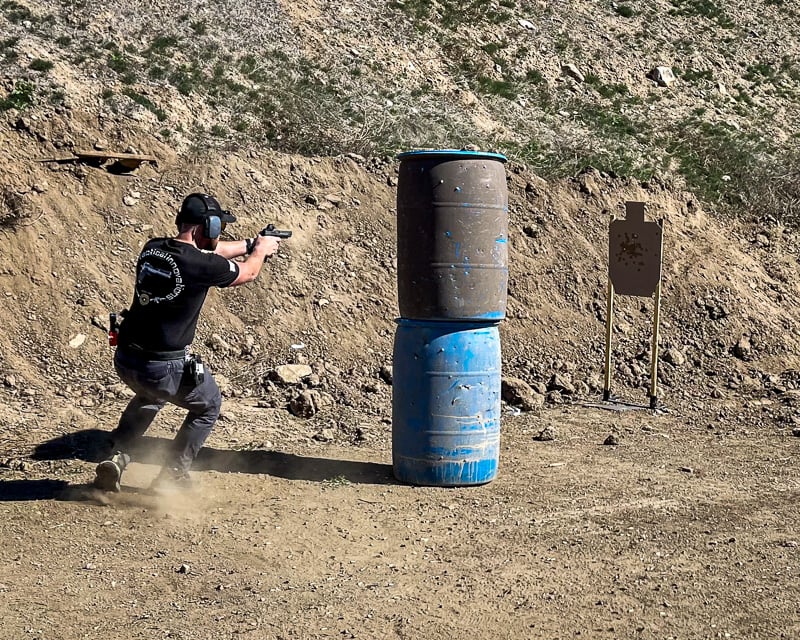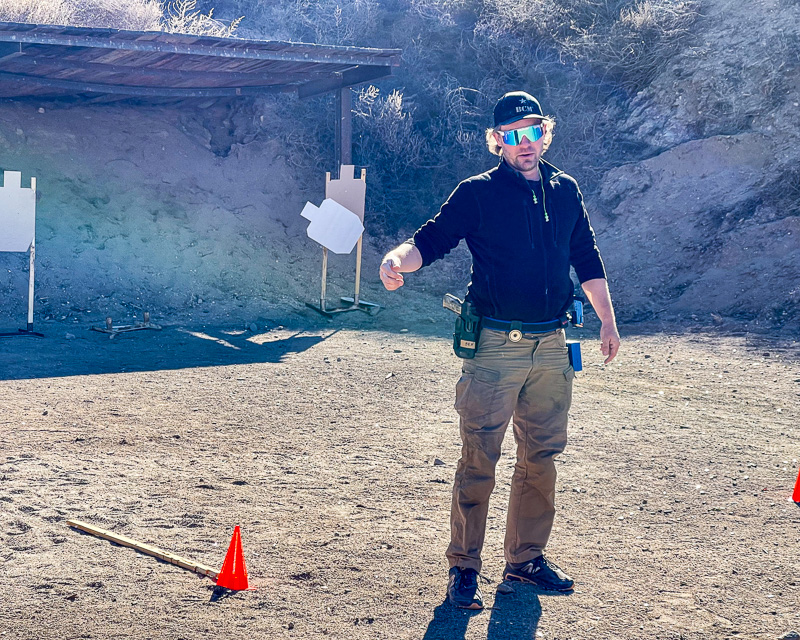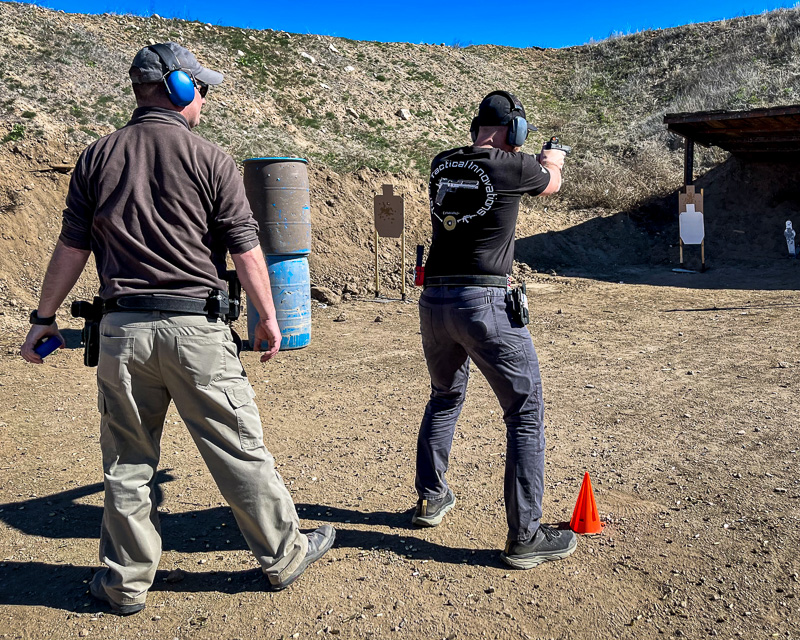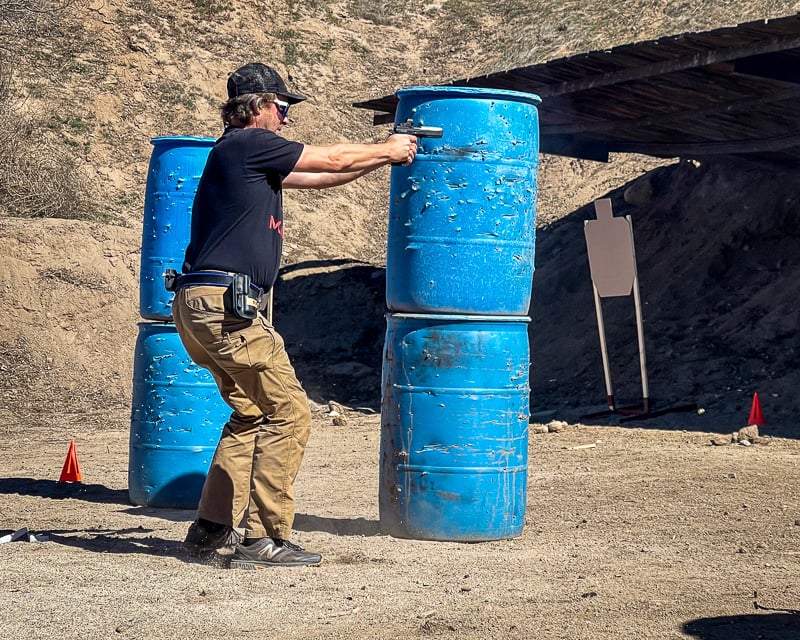I took the Ben Stoeger Fundamental Pistol Course at the beginning of February. This article will dive into my experience in the class and the skill takeaways I plan to implement moving forward. Some background about myself: I am a self-taught Grand Master in USPSA. I have hundreds of matches under my belt and picked up some titles along the way. This was the very first firearm skill-centered class I’ve taken. I came in with an open mind, ready to learn from some of the best.

Ben Stoeger is an IPSC World Champion and Multi-time USPSA National Champion. He is known for his shooting accolades and his series of live-fire & dry-fires books that have helped a lot of new shooters get started. If you are on Instagram, you probably have seen Ben expressing his opinion very bluntly. Sometimes this will grind people’s gears and take away from who he is as a shooter. Nonetheless, Ben can shoot, and he is one of the most active instructors in the country. I was very excited to be under his supervision, running the specific drills he selected for the class.

Joel Park, a GM in USPSA Production division, also instructed this class. He does an excellent job of articulating thoughts in a manner that is easy to understand. His fundamentals are locked in, and he seems like he is allergic to hitting anything other than the Alpha Zone on the target.
Having two instructors for the class made for a lot of individualized coaching, which is the most significant benefit when attending a course. They can look at your shooting skill under a microscope and give personalized instructions rather than blanket statements addressing the class as a whole. Both Ben and Joel are part of the Practical Shooting Training Group. This online coaching service fosters an environment for people to have knowledgeable conversations with some of the top-level shooters in the sport.

The Fundamental Pistol course looks into basic skills that make up firing a handgun accurately at speed. Being a Grand Master, I was skeptical about what I would learn but got takeaways within the first three hours of the 2-day course. I remember we first did the cold-start drill on day one, and Ben said, “Why are you in this class?” after looking at my target compared to some other attendees. I said, “I am here to have fun and willing to learn.” One great thing about the class is that you can be any level of shooter. Whether you just got your USPSA membership or have been shooting the sport for multiple years, there is always room to improve.

The class structure allowed for a lot of trigger time. They suggest bringing 600 rounds per day. I ended up getting a little trigger-happy and ended up shooting somewhere around 800 per day. Joel and Ben took us through warm-up drills to assess our skills level, including Doubles, Grouping at 20 yards, Target Transitions, and more. They set up exercises over two bays, so there would be around 3-5 shooters on each bay shooting. This means that there are two drills up at any given time. You would run through four or so reps when you’re up to shoot. Once you were through all the rounds in your magazines, you stuff them back up, then head to the other bay. Rinse and repeat.

I really enjoyed this format because we got multiple tries at executing the drills, which helped fine-tune some of the improvements I wanted to make on each run. Finding the mind-muscle connection is a huge aspect of shooting well, and the multiple reps allowed for that to happen. Each time Ben or Joel would have comments about each run. They knew where my baseline skill level was and kept encouraging me to go faster and faster. That speed is what helped me identify where I needed work. Each day we had around 3-4 blocks of drills, leading us to tackle 12-16 different drills over the two days.

What would a GM get out of a fundamentals class?
A lot. There are four takeaways that I will carry with me into this season and perhaps longer. Some of the things I diagnosed myself with, but having affirmation from some of the nation’s best instructors made me feel more confident in my self-diagnosis.
How To Identify Bad Habits When They Happen
This was huge. It’s also very hard. This skill has increased difficulty if you do not understand how your gun works and are not connected with the recoil impulse. Bringing awareness to what my red dot is doing under recoil is very important for this skill. This was a tell-tale sign of something being off if my dot was not tracking uniformly, also being aware of body mechanics during movement stages or planting to engage targets. Identifying what you did wrong will be the number one skill to improve your overall shooting ability and understanding.
Shooting Without Tension
When the buzzer goes off, it is easy for us to tense up and stress-shoot our way through a stage. This leads to huge inconsistencies. Once your muscles start to fatigue, your shot placement will vary. I am notorious for shooting tense. I am fairly athletic and let my muscles do the work for me. That caused me not to be able to relax when we were shooting the grouping drills or controlling my recoil during doubles. Joel pointed this out almost immediately and asked how I could shoot so well without having this under control. The fact is that I obtained most of my skills from shooting matches, so I am more relaxed in a match setting than on a flat range. This is typically the opposite of most people because the flat range does not have the added pressure of competition.
Visual Patience
This is making sure your eyes aren’t leaving the target before you are done engaging or, on the contrary, waiting until your sights are aligned on the target to break the shot. When we started pushing the speed on target transitions, I started to drag or push my shots horizontally out of the Alpha Zone. This was due to shooting too late or shooting too soon. Once I gave myself the extra few hundredths of a second to let my sights settle, I noticed my shot placement increased dramatically.
Shooting Target Focused
If you have any idea about practical shooting, you’ve probably heard this term before. That is keeping your focus on the target rather than your sights. I thought I was doing through and through, but Ben and Joel pointed out that I was starting at my dot, being sight focused instead. This leads to difficulty grouping your gun at speed and significantly affects your target engagement speed. Joel had me shoot occluded, which blocks your optic and forces you to superimpose your dot on the target, forcing you to be target focused. It was an excellent training tool but not the end-all for shooting target focused. It comes down to training that skill and being disciplined enough to stick through it.
The Value of Training Courses
I highly recommend taking training courses no matter your skill level. Get some fresh perspective on your shooting under the supervision of talented shooters, whether that be Ben & Joel or someone else. There are many reputable instructors, and I recommend starting with a competition instructor, even if you are in Law Enforcement or the Military. Competition shooters are the most efficient and well-versed gunslingers on the planet. If you know how to run your gun, the tactical side of LEO and MIL applications becomes a lot easier.
The courses should be about setting up an environment that fosters learning. I attended the Ben Stoeger Fundamental Pistol Course with friends and other local shooters I’m familiar with, which helped create a fun and light environment. I highly recommend bringing your buddies! At the end of the day, getting a fresh perspective on your shooting skills and ability will help you better yourself. I am thrilled I took the course. I recommend it to anyone looking to get better.


